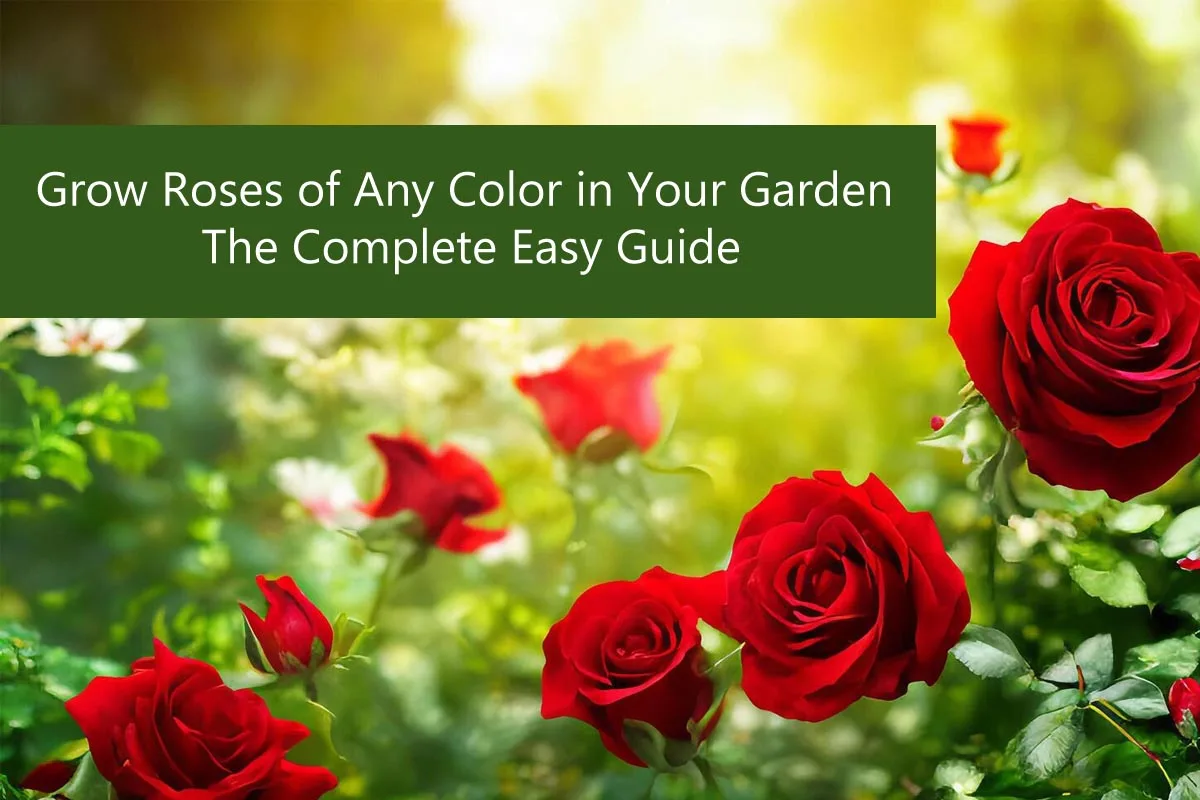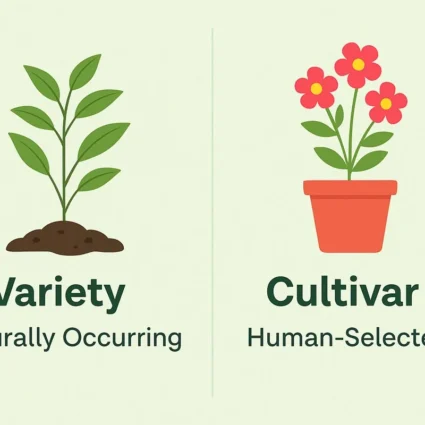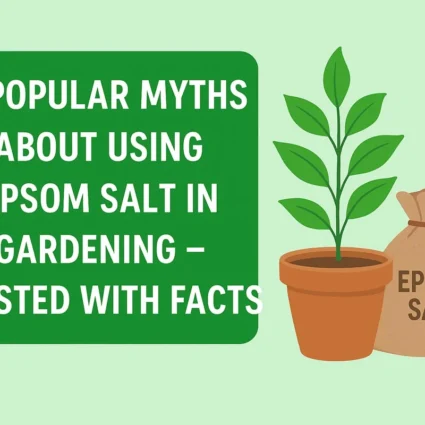
Grow Roses of Any Color in Your Garden – The Complete Easy Guide
Roses are often called the “queen of flowers” for their unmatched beauty, fragrance, and symbolism. Whether it’s the deep red rose of love, the bright yellow rose of friendship, or the serene white rose of peace—each color carries a story. Growing roses at home is not only rewarding but also surprisingly easy if you follow the right steps.
In this blog, we’ll share a step-by-step guide to growing roses of any color in your home garden, along with tips to keep them blooming season after season. Whether you’re a beginner or an experienced gardener, this guide will help you enjoy a colorful rose garden that enhances both charm and fragrance in your home.
Choosing the Right Rose Variety
Before planting, the first step is choosing the right type of rose for your garden. Roses come in hundreds of varieties, but the most common categories are:
- Hybrid Tea Roses – Perfect for cut flowers; large, elegant blooms.
- Floribunda Roses – Multiple clusters of roses, ideal for continuous blooming.
- Climbing Roses – Great for trellises, walls, or balcony decoration.
- Miniature Roses – Perfect for pots, small gardens, or balcony spaces.
Tip: If you’re a beginner, go for floribunda or miniature roses since they are low-maintenance and bloom more frequently.
Preparing the Soil and Pots
Roses thrive in nutrient-rich, well-drained soil. A balanced mix ensures strong roots and vibrant colors.
Soil Mix Recommendation:
- 40% garden soil
- 30% organic compost (vermicompost or cow dung manure)
- 20% sand or perlite (for drainage)
- 10% cocopeat (for moisture retention)
Pot Size:
- Minimum 12–16 inches deep for roses in pots
- Ensure pots have proper drainage holes
Pro Tip: Clay or ceramic pots are better than plastic as they allow air circulation to the roots.
Planting Roses – Step by Step
- Select Healthy Saplings or Grafted Plants – Choose disease-free plants from a trusted nursery.
- Dig a Hole or Prepare the Pot – At least 1.5 times larger than the root ball.
- Mix Fertilizer with Soil – Add a handful of compost or bone meal at the base.
- Place the Plant – Keep the grafting point (the knobby joint above the root) just above the soil level.
- Water Thoroughly – First watering should be deep to settle the roots.
Best Time to Plant Roses: Late winter to early spring (January–March in India) or monsoon season.
Different Rose Colors and Their Meanings
Growing roses of different colors can add beauty and emotions to your garden:
- Red Roses: Symbol of love and passion.
- Yellow Roses: Represent joy, cheerfulness, and friendship.
- White Roses: Stand for peace, purity, and spirituality.
- Pink Roses: Express gratitude, admiration, and happiness.
- Orange Roses: Indicate enthusiasm, energy, and creativity.
- Lavender Roses: Rare and royal; symbolize mystery and uniqueness.
Plant a mix of colors to create a rainbow rose garden at home!
Also Read This :10 Stunning Red-Leaved Plants to Enhance the Charm of Your Home & Garden
Sunlight and Watering Needs
Roses love the sun!
Sunlight: At least 5–6 hours of direct sunlight daily.
Watering:
- In summer – daily, preferably in the morning.
- In winter – every alternate day.
- Avoid waterlogging to prevent root rot.
Always water at the base of the plant, not on leaves, to prevent fungal diseases.
Fertilization & Feeding Your Roses
Roses are heavy feeders—they need regular nutrition to bloom.
- Natural Fertilizers: Compost, cow dung, banana peel fertilizer, or vermicompost.
- Chemical Fertilizers (Optional): NPK 19:19:19 once a month.
- Special Boost: Add bone meal or mustard cake powder every 30–40 days.
Pro Tip: Use liquid seaweed fertilizer once a month for vibrant-colored blooms.
Also Read This :Cultivars vs. Varieties: What Every Gardener Should Know About the Difference
Pruning and Maintenance
Pruning is essential for healthy rose growth.
When to Prune: Late winter (January–February).
How to Prune:
- Cut dead, dry, or diseased branches.
- Trim weak stems to encourage stronger growth.
- Always use sterilized pruners.
Regular deadheading (removing dried flowers) helps encourage continuous blooming.
Common Pests and Natural Remedies
Roses often attract pests, but don’t worry! Here’s how to control them naturally:
- Aphids: Spray neem oil solution (5 ml in 1 liter of water).
- Spider Mites: Use soap water spray.
- Powdery Mildew: Spray a mix of baking soda (1 tsp) + water (1 liter).
- Caterpillars: Hand-pick or use organic BT spray.
Regularly inspect leaves for early signs of disease.
Extra Tips for Year-Round Blooming
- Mulch the soil with dried leaves or cocopeat to keep it cool.
- Rotate pots every few weeks for even sunlight.
- Provide support for climbing roses with trellises or nets.
- In winter, cover rose plants with straw or mulch to protect from frost.
Conclusion
Roses are not just flowers; they are emotions blooming in your garden. With the right care, soil, and sunlight, anyone can grow roses of any color at home. From red to white, yellow to pink, your garden can become a paradise of fragrance and beauty.
So, don’t wait—start your rose journey today and let your garden bloom with love, peace, and happiness.
Also Read This :Epsom Salt in Gardening: 10 Myths Every Gardener Should Stop Believing
FAQs: Growing Roses of Any Color at Home
Q1. Can roses be grown in pots?
Yes, roses thrive in pots if you choose a large pot (12–16 inches) with good drainage.
Q2. Which rose color is easiest to grow?
Red and pink roses are hardy and easiest for beginners.
Q3. How long do rose plants live?
With proper care, rose plants can live for 10–20 years or more.
Q4. Can roses bloom year-round?
Yes, with proper pruning, fertilizing, and sunlight, roses can bloom throughout the year.
Q5. How to make rose flowers bigger?
Regular pruning, deep watering, and adding organic compost help roses produce larger blooms.




